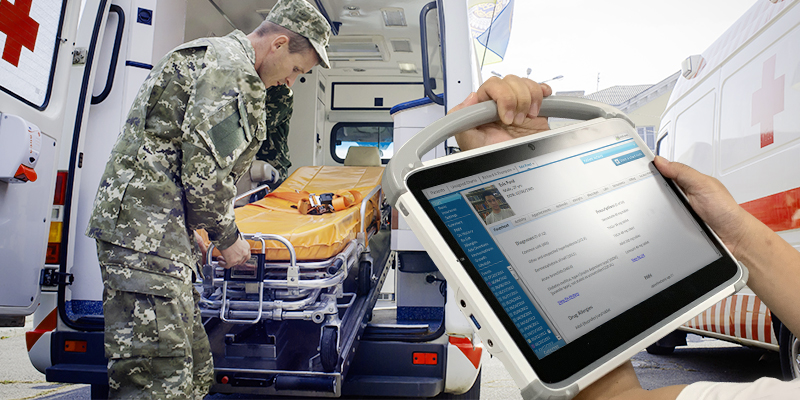
In high-stakes military zones, medics are usually the first ones to arrive when injuries occur and medical attention is needed. Their expert ability to assess the injuries quickly, provide immediate care, and coordinate evacuations can mean the difference between life and death. Military medics go through rigorous training that prepares them for real-world situations. Whether in simulated combat exercises or responding to actual emergencies, they must work seamlessly and efficiently under pressure.
Their training isn’t just about knowing how to apply a tourniquet or administer an IV—it’s about making critical decisions in the heat of the moment. This requires medics to quickly assess injuries, prioritize treatments, and communicate effectively with their teams. Training for these intense scenarios is evolving, and rugged medical tablets are playing a crucial role in refining tactical field care.
The Role of Rugged Medical Tablets in Tactical Field Care
Rugged medical tablets have become an essential tool in both training and real-world healthcare scenarios.
- Enhanced Documentation & Note-Taking—Whether transporting casualties, retrieving tools and equipment, or performing life-saving procedures, medics need to document their actions accurately. Medics and fieldworkers use rugged medical tablets to enable digital record-keeping even in harsh conditions, ensuring clear, legible notes that can be shared with medical teams.
- Improved Communication & Coordination—In combat situations, staying connected is critical. Rugged medical tablets allow medics to communicate seamlessly with physicians, specialists, and field teams, enabling better coordination during evacuations and ongoing treatments.
- Real-Time Medical Oversight—A team’s effectiveness improves when they receive continuous feedback. During training exercises, primary care physicians, emergency room doctors, and physician assistants can evaluate medics in real-time, offering insights and refining their skills for better performance in the field.
Collaboration Across Military Branches
The effectiveness of military medical teams is strengthened when different branches train together. As highlighted in recent joint training exercises between the U.S. Army combat medics and Navy corpsmen working side by side fosters shared learning and expertise. These joint efforts help standardize field care techniques, introduce new medical strategies, and ensure that teams can work together seamlessly in real-world missions.
Rugged medical tablets further enhance this collaboration by providing a common digital platform for training materials, medical protocols, and real-time data sharing. This integration enables medics from different branches to stay on the same page, ensuring consistent and effective care in any operational environment.
Pushing Tactical Medicine Forward
Military medicine is constantly evolving, and technology is driving that progress. With rugged medical tablets, medics can refine their skills, document patient care efficiently, and communicate with medical teams more effectively. Whether in training or on the field, these handheld devices are shaping the future of tactical field care, ensuring that those on the front lines have the best possible chance of survival.
By embracing technology and fostering cross-branch collaboration, today’s military medics are better equipped than ever to respond to injuries, adapt to dynamic situations, and ultimately save more lives in the field. Rugged medical tablets assist field medics, empowering them to do their job efficiently and effectively in real time.

